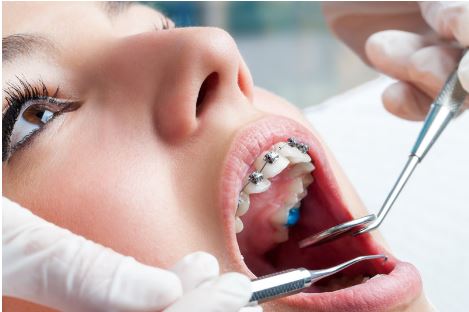Choosing Between Dentures and Bridges: What Patients Should Know

To make the trip to Dorking Dental Centre easier for you, today’s article offers a brief but concise comparison of the two dental tools and how useful they are. Their pros and cons are also compared to help you choose the right path to restoring your dentition.
The Use of Dentures
Kicking things off are the very popular dentures. Dentures are removable dental implants that help replace one or all of your teeth. In essence, they’re prosthetic teeth that help you fill the void left behind by any missing tooth. Not only do they replace the teeth, but they also restore the function greatly missed due to damaged teeth.
Therefore, they’re useful for eating and talking. Partial dentures and complete dentures are the two common types. The first type is employed to replace some part of your dentition. On the other hand, complete dentures are used when you’re left toothless in the upper or lower jaw.
Pros Of Using Dentures
- Improved aesthetics due to renewed smile and teeth appearance
- Restores your teething functions, such as speaking and chewing
- Easily removable so you don’t have to worry about discomfort
- No risk of cavities or gum disease
Cons Of Dentures
- It gets quite uncomfortable, especially during the first few weeks of using them.
- Eating food is also difficult at the early stages of their use due to how long it takes to adjust to dentures.
- It takes a lot to clean and maintain dentures daily
What Are Dental Bridges?
Moving on to alternative dental prosthetics, dental bridges are also popular but for different purposes. Firstly, they consist of two crowns or implants fixed on either side of a gap. Between those crowns is a pontic – used to join the crowns together and fill the gap.
Unlike the solely plastic dentures, dental bridges are made from various materials, including gold, silver, and porcelain. This is one factor to consider when it comes to quality and design.
Pros of Dental Bridges
- They offer aesthetic and functional corrections for missing teeth.
- By filling the tooth gaps, they restore feeding function.
- The bridge lives up to its name by holding the teeth on either side firmly. This will reduce movement and prevent gaps from getting wider.
- It also helps reduce bone loss and maintain facial structure.
Cons Of Dental Bridges
- For starters, there’s a risk of the adjacent teeth falling victim to damage. This happens when they are held too firmly.
- Another risk occurs when the bridges aren’t fitted properly. This time, tooth decay and plaque growth are possible.
- The teeth may also collapse and worsen if they lack the strength to hold the bridge.
Verdict: Making The Right Choice for A Better Oral Health
At the end of the day, it comes down to how much benefit you stand to gain compared to the setbacks you’re willing to deal with. You should also consider the issue you’re addressing before making up your mind.





